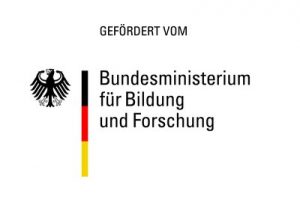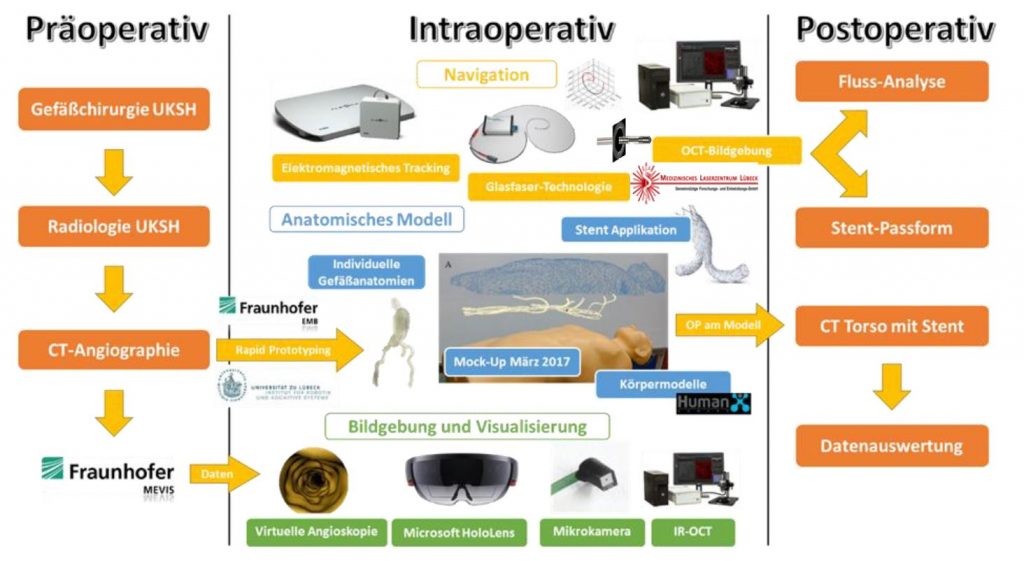Public projects
NavEVAR (Navigated Contrast-Agent and Radiation Sparing Endovascular Aortic Repair)
Endovascular vascular therapy without radiation and contrast agent exposure using the example of the main artery
In the Western industrialized nations, vascular diseases are the leading cause of death, even before the onset of cancer. These include diseases of the coronary arteries, disorders of the cerebral vessels and diseases of the abdominal and extremity vessels. Globally, 202 million people currently have arterial disease of the leg vessels. In addition to the pharmacological treatment of atherosclerosis, minimally invasive therapy, due to the advances in medical technology in catheter procedures, has gained a high status in the treatment of patients with vascular disease. The use of so-called endovascular procedures (minimally invasive) has been extended to almost all sections of the human vessel in the last two decades. The necessary representation of the vascular anatomy for the control of the catheter and therapy systems and for the visualization of the vascular pathology is currently achieved in all procedures and specialties (cardiology, angiology, radiology, vascular surgery, neuroradiology, etc.) by a 2-dimensional angiography with contrast agent application under X-radiation.
The basic idea of the disruptive technology concept NavEVAR includes, for example, the placement of a stent graft in the main artery without X-ray radiation and without the use of contrast agents for vessel imaging.
The focus is on two key points of the procedure:
- The reduction of the process-specific risks of the previous procedure, in particular the reduction of the radiation exposure for the patient and the practitioner as well as the reduction of the contrast agent exposure of the patient
- The improved visualization for the practitioner (by augmented reality) during the procedure with resulting increase in quality (possible reduction of the intervention time, reduction of prosthetic misplacement, additional safety gain, etc.)
The combination of hardware-based tracking systems (sensors) and state-of-the-art imaging and image processing technology is necessary to realize the above-mentioned goals. As part of the R & D project, various tracking systems in fusion with innovative visualization technology will be investigated and further developed and should i.a. be made marketable by a spin-off at the end of the project period.


